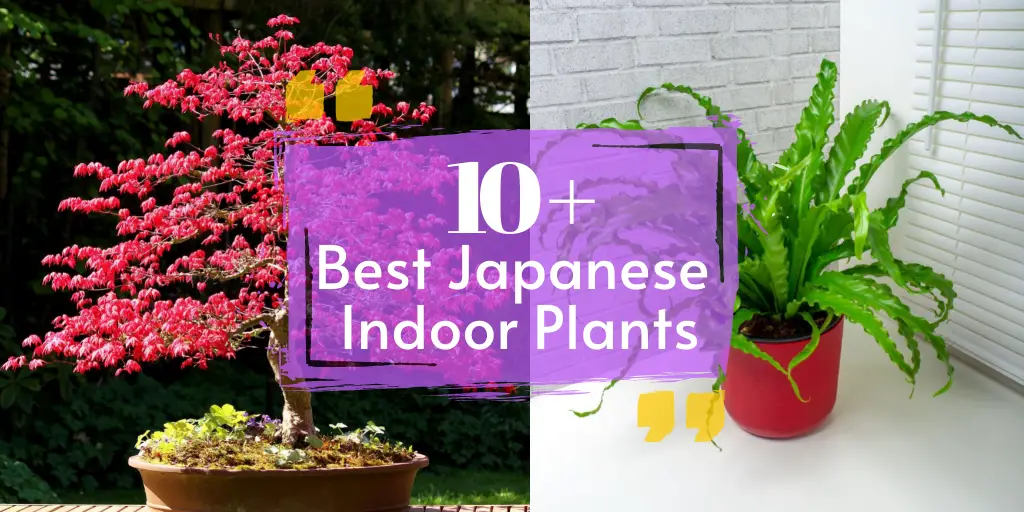
Japanese indoor plants are known for their aesthetic appeal and the serene ambiance they create. These plants are relatively easy to care for and can thrive in various environments.
These plants, make excellent upgrades to any indoor garden. They are low-maintenance plants that don’t require a lot of light or water to flourish, making them ideal for anyone looking to add a touch of nature to their home without worrying about too much maintenance.
In this article, we will recommend 10 of the best Japanese plants you can consider for your indoor space and how to care for them so that they stay healthy and beautiful.
What Are the Most Popular Indoor Japanese Plants?
1. Indoor Japanese Maple Bonsai

The Japanese Maple Bonsai, also known as (Acer Palmatum) is a native to Japan, Korea & China and belongs to the soap tree family (Sapindaceae). It has leaves in the shape of a hand with five or more pointed lobes.
Japanese Maple Bonsai is well-known and popular for its stunning red, yellow, and orange autumn colors. It is a minimal-maintenance houseplant that thrives without a lot of light or water.
2. Japanese Bird’s Nest Fern (Asplenium nidus)
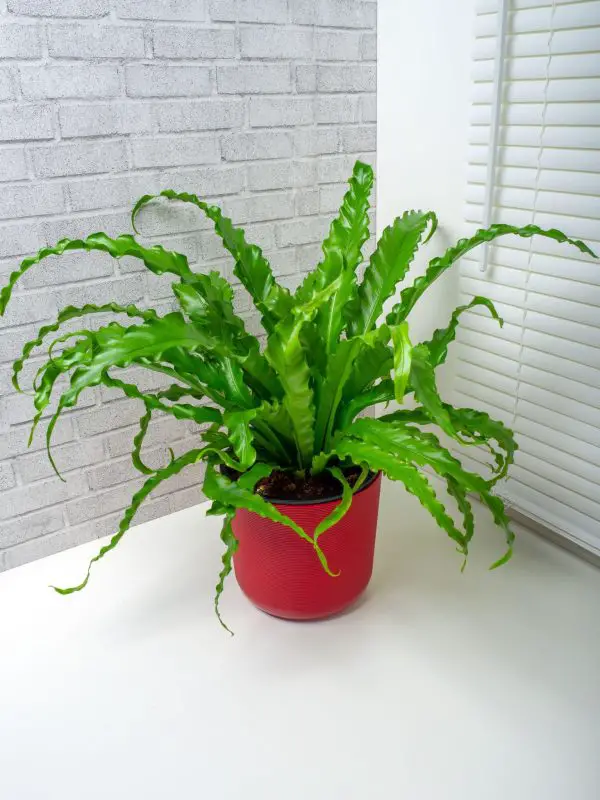
Asplenium nidus is an eye-catching plant with bright green foliage that grows in a clover pattern to form a nest shape. Its beautiful upright growth distinguishes this easy-to-grow Bird’s Nest from the others.
The rate of increase of these ferns is slow. They’re better planted mostly in spring, but houseplants can be started any time of year.
3. Japanese Larch Bonsai
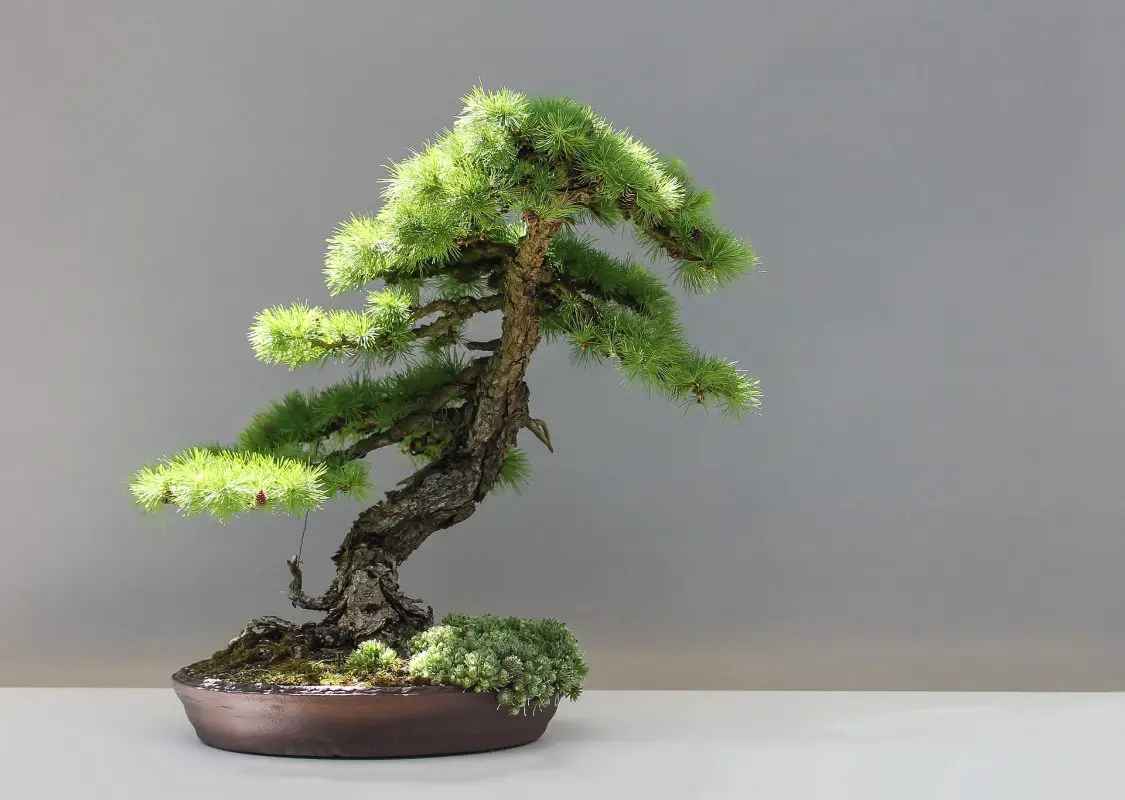
The Japanese larch bonsai is widely popular in Japan and also can be raised indoors. It originates from Japan and thrives in cold weather. It has tiny, dark-green leaves and blooms in the spring with yellow flowers and requires little care.
4. Indoor Japanese Weeping Willow

This fast-growing indoor plant is native to the Japanese and has branches that hang down from its top, this plant is large and easy to grow.
This plant features lush, wispy green leafy, and narrow curving branches atop a large trunk During the winter months, the Japanese Weeping Willow sheds its leaves, revealing its graciously rounded and hanging down branches.
Japanese Weeping Willow is an easy-to-grow and low-maintenance plant.
5. Indoor Japanese Peace Lily (Spathiphyllum)
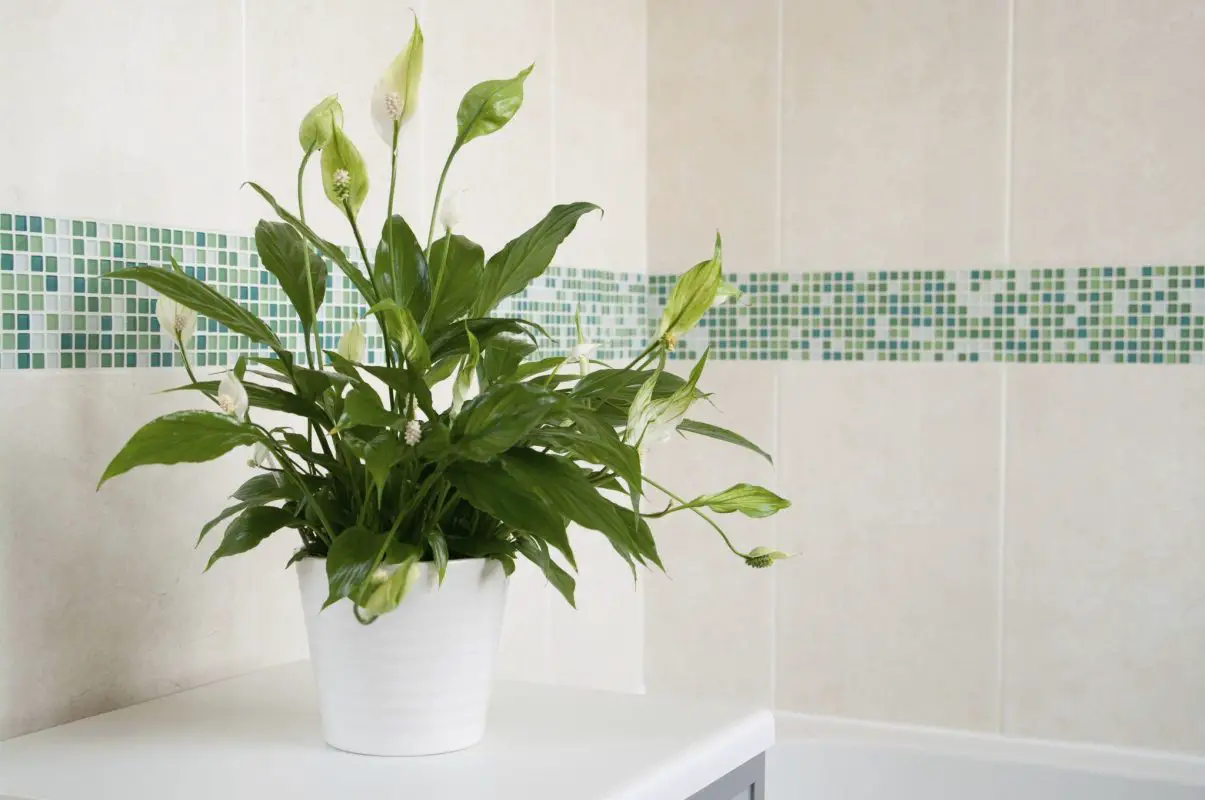
This Japanese Plant is a very popular choice for home and office gardeners, it is known as a closet plant. It has huge, dark green foliage and blooms white flowers mostly in summer.
Whereas peace lily plant care is simple, correct growing conditions are necessary.
6. Sedum Makinoi (Japanese Stonecrop)
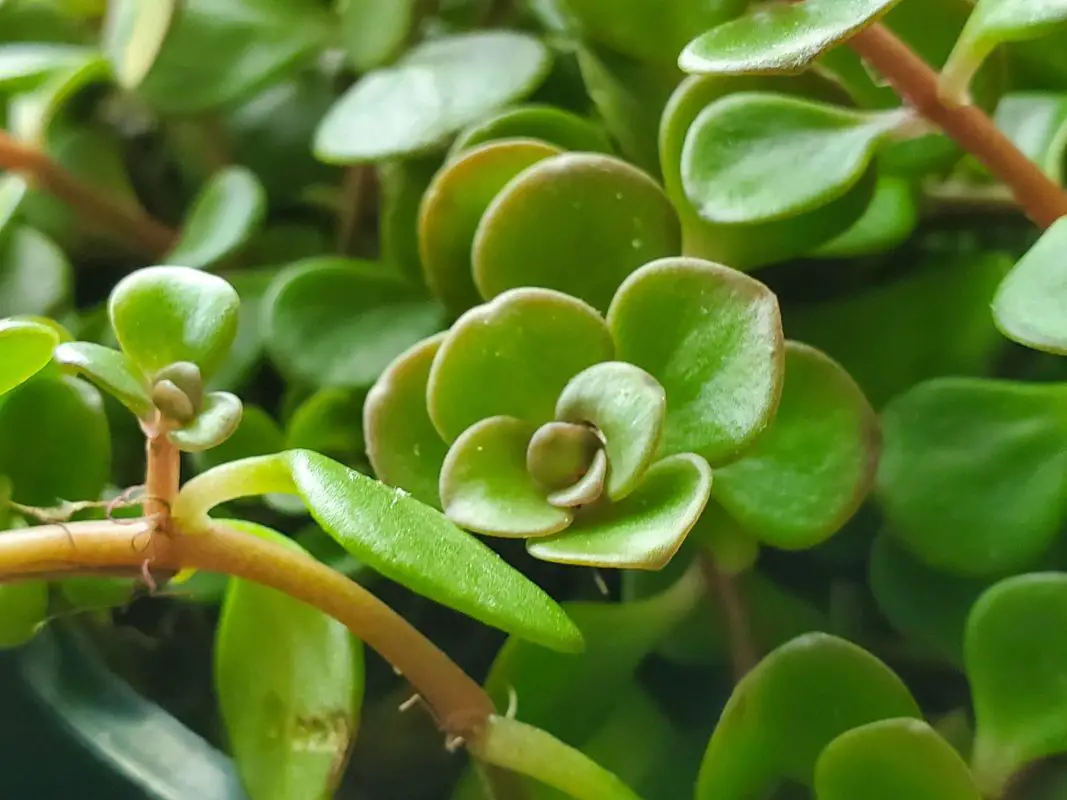
Japanese Stonecrop (Sedum Makinoi) is an attractive hardy plant. Because these plants are succulents and generally resistant to pests and diseases. Sedums don’t require much attention. Only regular watering and bright indirect light are required. Avoid overwatering them.
7. Indoor Japanese Fern Tree
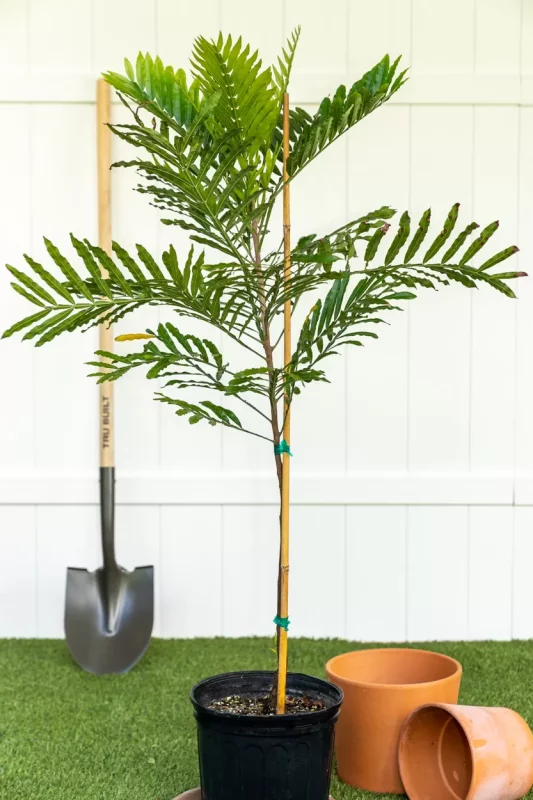
The Japanese Fern tree is a lovely and graceful plant that is perfect for a suburban yard or home landscape. It has large, dark green leaves that are tightly packed together, giving the tree a dense and attractive crown that provides good shade.
Fern trees require some planning and upkeep, but once established, they are very easy to maintain.
8. Japanese Kokedama
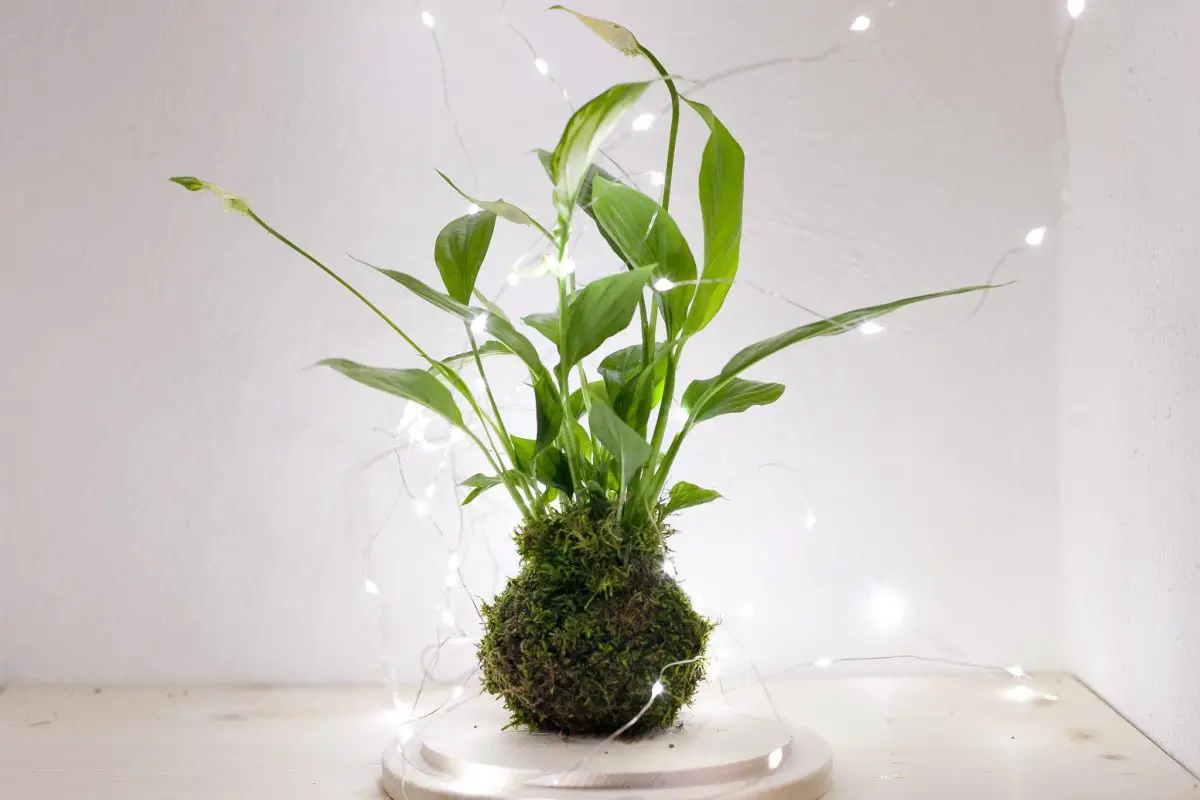
Kokedama is a Japanese art form in which plants are grown in moss-covered balls of soil. This is a popular indoor plant because it doesn’t require much sunshine or moisture to flourish. Kokedama is a minimal plant that does not require much fertilizer.
9. Lucky Bamboo

The Lucky Bamboo plant requires little care and flourishes in indirect sunlight. This plant is commonly found in offices and homes and has eye-catching shapes, curls, or braided stalks. The lucky bamboo plant is a well-known Feng Shui remedy that is believed to deliver good luck and prosperity to the area where it is grown.
10. Ficus Ginseng Bonsai
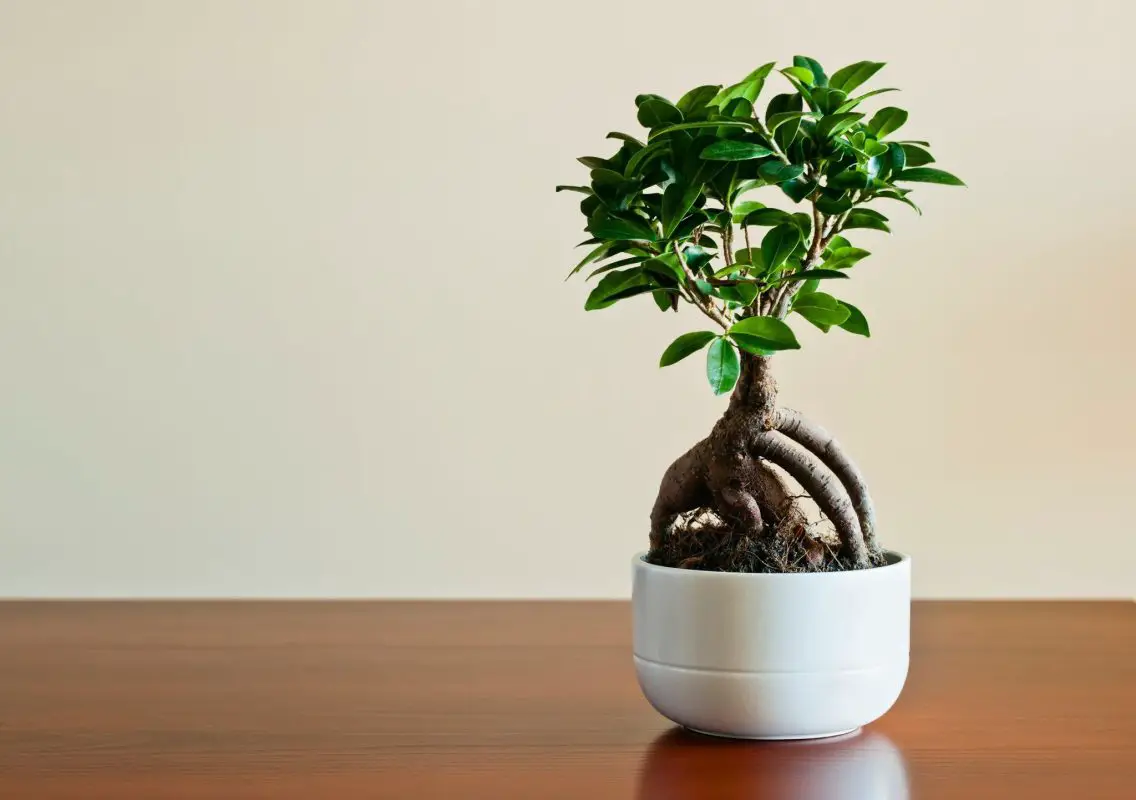
Ginseng ficus is one of the many varieties of fig trees. It looks great and requires little care when likened to other bonsai, which may be difficult to keep up. It is most noticeable because it grows thick roots that remain exposed above the ground’s surface.
Ginseng Bonsai requires a lot of light, so putting it on the window ledge is a great idea.
How to Care for Your Japanese Indoor Plants

Watering
Watering Indoor Japanese plants is necessary, but it can be difficult, always do this when your plan’s soil is slightly dry, but avoid excessive watering, which can affect the foliage to turn brown or yellow. It’s also a great idea to moisten your plants once per day, particularly if you live in a dry environment. You can keep your Japanese plants healthy and beautiful indoors by following these simple guidelines.
Fertilizing
Among the most important aspects of caring for Indoor Japanese plants is fertilizing them once a month. A balanced fertilizer or a fertilizer designed specifically for bonsai plants is recommended. While fertilizing your plants, it is critical to first water them before applying fertilizer to the soil. You should always avoid fertilizing wilting or sick plants. You can help your Japanese plants thrive indoors by following these simple guidelines.
Things to Remember to Help Your Japanese Indoor Plant Grow Healthy and Look Beautiful
There are a few things to consider/remember when caring for your Indoor Japanese plants, even though they can be difficult, with a little care and patience, you can help them flourish. Below are some simple ways of keeping your indoor plants looking beautiful and healthy:
- Place your plants in a bright location where they will receive at least four hours of direct sunlight per day.
- Always water your plants when the soil is dry, but don’t water them too much.
- Use a balanced fertilizer or a bonsai fertilizer once a month to fertilize your plants.
- Sprinkle your indoor plants with water once per day, particularly if you live in a dry environment.
Conclusion
Finally, Japanese plants are wonderful additions to any indoor garden. They are low-maintenance and do not require a lot of light or water to thrive, which makes them ideal for those who want to bring nature indoors without being concerned about too much maintenance. In this article, we discussed the most popular Japanese plants that can be risen indoors, and also how to care for them so that they remain healthy and attractive. Thank you for your time!
